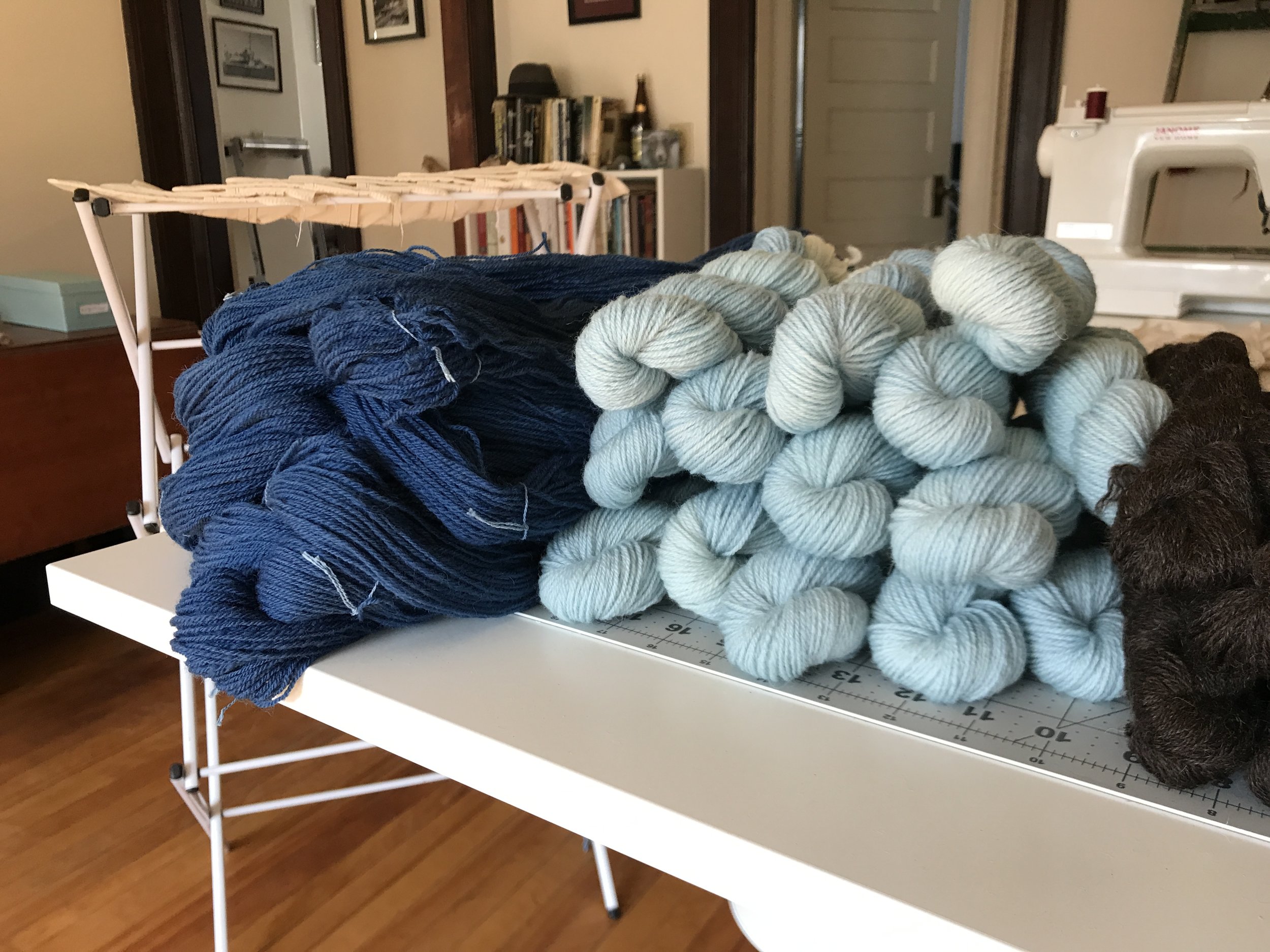I have been looking forward to this project all year. First, if you haven’t yet read Dotty’s amazing posts about her Cordova Gansey Project and all that inspired it, you should go to her blog post haste. Cordova, Alaska, is a fishing town, and Dotty and her family are fisherfolk. To very briefly summarize her wonderful eleven part series of posts; while attending Shetland Wool Week she was drawn to the knitting traditions of a culture of fishermen and inspired to bring them to her modern day (though not that different) fishing village in Alaska. To that end she has created the Cordova Gansey Project, bringing together people interested in all aspects of gansey study, design, creation, and wear. This June (date) she will be hosting a week of classes and yarn adventure in Cordova in celebration of ganseys and fisherfolk. The list of teachers reads like a who’s who of the knitters and dyers I am in awe of.
I love everything about this project (history! boats! complicated forms of traditional knitting!) but the bit that I am personally honored by is that a special batch of my gansey yarn will be at the Netloft for this event. The fleece for this gansey yarn comes from Straw’s Farm, in Newcastle, Maine. Or rather, the farm is in Newcastle, but the sheep themselves live year round on an Island in Penobscot Bay. The island has been occupied by sheep for the last two hundred years or so; whatever breed they started as has been lost to time (hence the unwieldy yarn name, “Straw’s Farm Island Sheep”). The moment I learned about this flock I knew that I had to use their fleece in some project, and when Dotty got in touch about her Gansey Project I knew that it was the perfect match - heritage island wool from Maine going to a gansey project in Alaska.
There are a variety of different fleece and yarn buying models for small yarn producers. Some have their own flocks and sell yarn only derived from that flock, some buy fleece from wool brokers or wool pools, some buy base yarns from a third party, and some, like me, buy fleeces directly from small farmers. The time needed to get from fleece to yarn to finished yarn varies, as one might imagine, depending on the source of the fleece and the mill that does the spinning. I tend to start planning my fleece buy in February, buying fleece as the sheep are sheared (the timing of which depends on the farm in question). Then it’s a matter of getting fleece to the mill, and the mill getting the yarn back to me. If I send fleece in June I sometimes get it back in August, or sometimes I get it back in January: a lot depends on the size of the job and complexity of the yarn. This is a long way of saying that I have been planning my part of this project since last February, and finally during my last rotation home I got to work with the yarn.
Last June Sarah of FiberTrek was good enough to help me pick up 172 lbs of island wool from Straw’s Farm (contributing her Subaru to the cause).






















